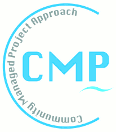CMP questions & answers
The most commonly posed questions related to the CMP approach are answered in the following. Please contact us if you do not find an answer to your specific question.
1. Why is the CMP approach using the Micro Finance Institution (MFI) and not the woreda finance office?
The MFI provides an underutilized private sector capacity that has the resources to answer to the demand of the communities. In most cases, the MFI is closer to the community than banks or woreda finance offices. In many woredas the MFI is the only bank for the people in the woreda. MFIs are already being used for transferring funds as they provide a similar service for the government in the payment of pensions for rural elderly people. Moreover, the MFI’s objective of community development synchronizes with the WaSH and CMP philosophy.
However, it there are also other ways of channelling the money, such as using the Woreda Finance Office. The WaSH Implementation Framework (WIF) defines that the decision regarding the channelling of funds should be decided at lower levels. Kebeles in consultation with the communities should make the decision. In general it was understood that CMP does not directly mean the utilization of the MFI. CMP refers to a WaSH implementation approach where projects are managed by the community, including the financial management. Funding channels in the CMP approach are not limited to MFI fund channelling only.
2. The CMP approach relies on MFIs to be accessible to the communities. What if the community has no access to a MFI?
The coverage of some MFIs in Ethiopia is more than the coverage of banks. In most cases the MFI is the closest bank to the community. Often MFIs have even 3 sub-branches in each woreda. This is the case at least in places where the simple technology can be applied. In pastoralist areas the situation may be that neither the bank nor MFI are available. In this case the only option is the use of Woreda Finance Office as a “bank”.
3. Can you really trust the WASHCOs to implement such a project?
The problem regarding the trust issue is with us, the professionals. The people at the community level know their own situation most profoundly, but we, the so-called professionals, think that we know better what is best for the community. The professionals have to change their way of thinking and learn to listen and respect the voice of the community.
4. Is there any experience in introducing the CMP approach for higher level technologies?
In the Amhara region, CMP piloting in the construction of the piped water supply with borehole has been tested. In that test the woreda made payments to the suppliers and contractors upon the request from the community. The community had control and decision-making power on the payments that were made.
However, the FinnWASH-BG project in the Benishangul-Gumuz region has much more experience in the construction of boreholes and gravity schemes by applying the CMP approach: two successful gravity schemes have already been constructed through the CMP approach. The community contribution in these pilot schemes was nearly 30%. Schools, agriculture centres etc. were well connected to these schemes and the costs were lower than if the schemes had been built with the conventional woreda managed project approach.
5. How are the hygiene and sanitation aspects incorporated into the CMP approach?
CMP is an alternative approach of an integrated WaSH program implementation where the responsibilities of implementation and financial management rest within the community. In COWASH the household level and institutional sanitation and hygiene are part of the integrated WaSH and are implemented by supporting the woreda and kebele level CLTSH capacity building. CMP approach has already been in use for institutional sanitation implementation.
6. What is the relation between self-supply projects and CMP?
The concept of self-supply has existed in Ethiopia for generations. Traditionally, self-supply water facilities have been 100% funded by the households themselves. Self-supply has a significant potential for providing WaSH services in Ethiopia and an acceleration program for self-supply has now been launched. The self-supply guideline is under development and attempts have been made to incorporate self-supply into the Universal Access Plan. There are many linkages between self-supply and CMP with regard to the capacity building, private sector development and MFI utilization as both approaches are practised in the same hydro-geological areas.
7. Most of the WaSH projects have problems in bringing their approach to the lower governmental levels. What is the strategy of the CMP implementation on the woreda level?
For the purpose of woreda level capacity building, Regional Support Units (RSUs) will be established. There is a cascading mechanism with regard to the capacity building with ToT trainings playing a crucial role in it. The RSUs had to be established because there is not enough capacity and resources in the existing Project Management Units (PMUs) at the regional level. RSUs and PMUs anyhow work closely together and share same resources of the regional water bureaus. However, in the future, only one regional WaSH unit should exist and all capacity building units should be brought together. COWASH project’s role is to be the catalyst for the One WaSH Program.
CMP approach believes in the devolution of the power to the lowest level possible. Focus is on the capacity building of the Woreda WaSH Teams (WWT) in order to facilitate them in assuming the full power in woreda level WaSH implementation. WWTs shall use existing private sector services (woreda working groups, community facilitation teams) to build the capacity of the kebeles and WASHCOs in the promotion and technical assistance of communities. Communities will have the full authority on their resource utilization and financial management of their own projects.

